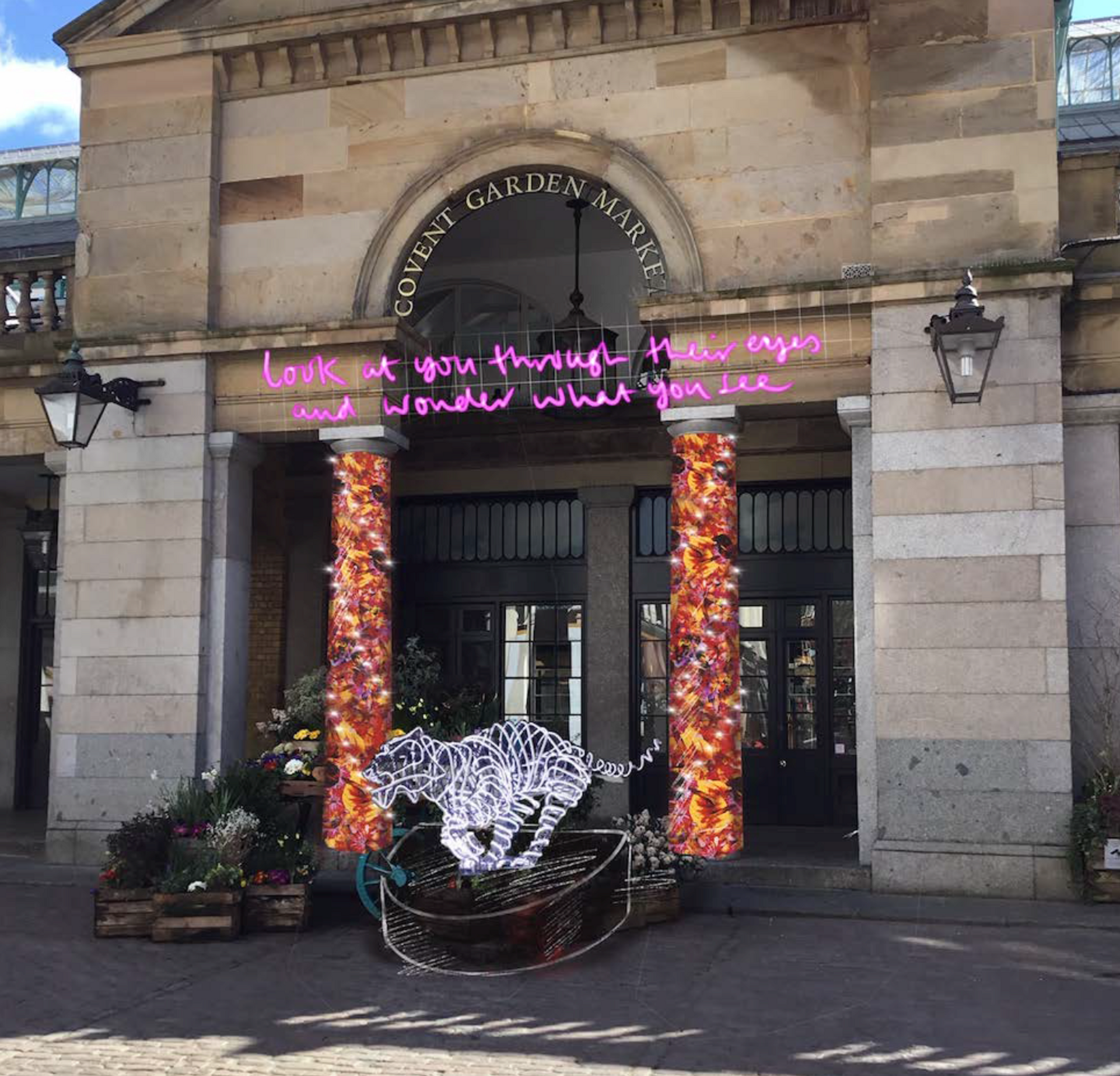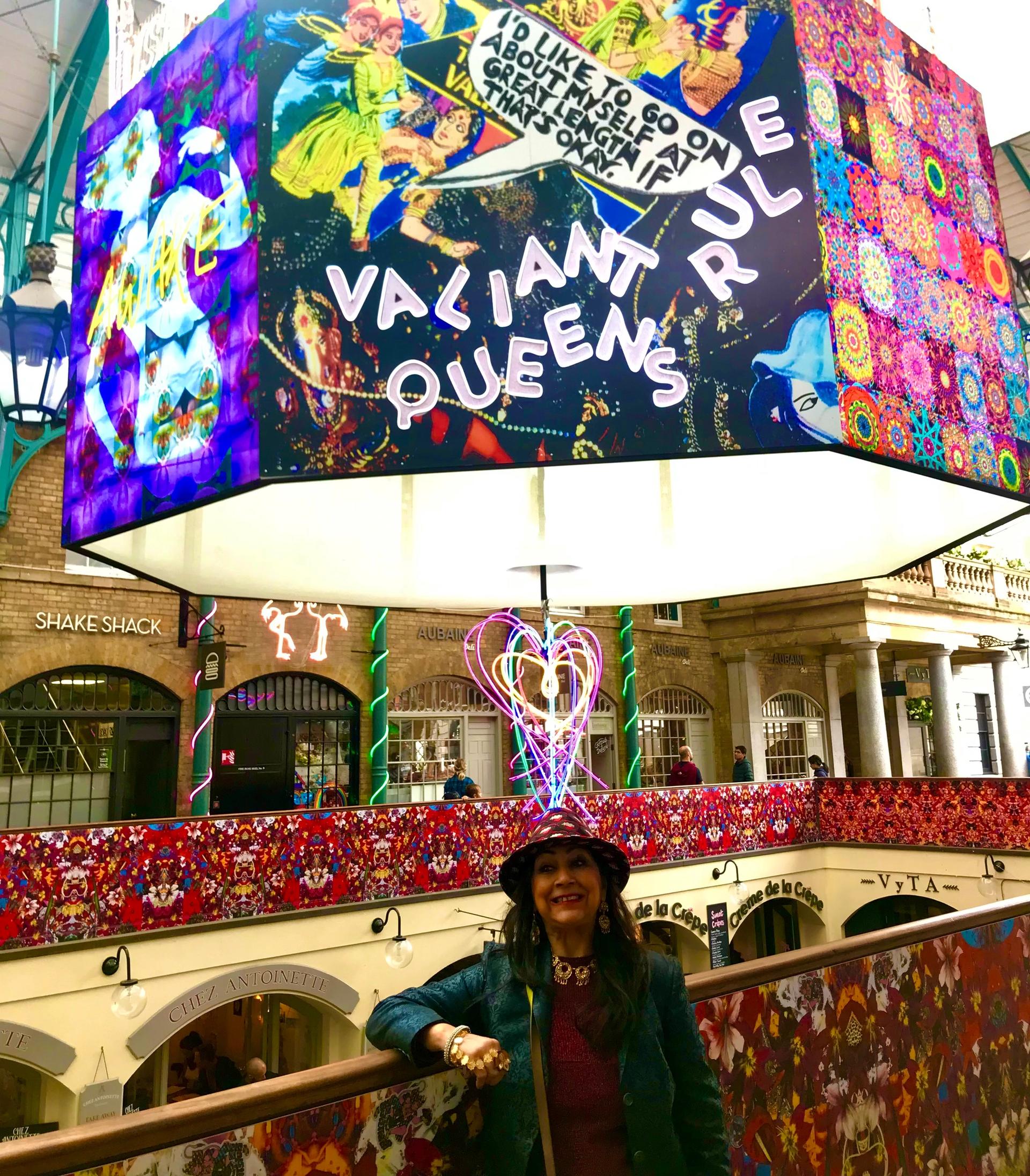Chila Burman’s festive transformation of Tate Britain’s façade into a neon-clad Pop Punjabi party was for many a beacon of hope in the dark lockdown days at the end of last year and beginning of this one. Crowds gathered nightly on the steps of the museum just to bask in her exuberant abundance of vivid colour and to hope for better days. So popular was it that Tate extended the commission until the end February.
Now with more freedom of movement—for the time being at least—Burman has worked her maximalist magic on Covent Garden, the complex of shops and restaurants occupying London’s historic former fruit and veg market halls in the heart of the capital’s West End. And it’s an equally uplifting experience. Inside and out, on pillars, porticos and facades, are a plethora of illuminated beasts, together with uplifting slogans and densely collaged vinyl signs. In this glorious parallel universe, bindis, flowers, packaging, i-Pad drawings and a pantheon of Hindu goddesses and warrior queens coalesce and co-exist. Burman’s most ambitious installation yet, this Covent Garden extravaganza will remain in-situ until the end of October.

Chila Burman's Do You See Words In Rainbow (2021). Courtesy of Louisa Buck
In acknowledgement of all the surrounding retail signage, Burman has increased the amount of text, both printed and illuminated, in her work. "Do you see words in rainbows?" written in purple neon welcomes visitors to the South Hall, while "Punjabi Rocker", "Carnival of Feminists", and "Valiant Queens Rule" are among the messages blended into Burman’s visual smorgasbord.
Forming the centrepiece inside the main hall is a giant suspended octagon covered in kaleidoscopic patterning and neon that in turn supports a dangling neon heart which appears to have been scribbled in coloured light. Then there are the enormous creatures traced in multicoloured neon: a dragon, a bull, peacocks and a magnificent monkey.
But the piece-de-resistance is the giant white neon tiger which guards the North Piazza entrance. This big cat is the latest incarnation of Burman’s trademark homage to the neon tiger that her Punjabi immigrant father installed on the roof of his ice cream van in Bootle in the 1960s.

Chila Burman in front of Do You See Words In Rainbow (2021). Courtesy of Louisa Buck
“My Dad was seriously ahead of his time. He was a proud Punjabi, everyone else had Batman or Robin on their van, but he had a Bengal tiger," says Burman. In Covent Garden the tiger has a benign welcoming demeanour, whereas its snarling Tate Britain counterpart was more ferocious, “looking like it was going to eat you alive,” the artist adds.
Competing with the advertising, signage and window displays of the extensive Covent Garden site posed different challenges to the free-standing façade of Tate Britain. But Burman’s bold vision more than holds its own in a commercial environment she describes as "eclectic and nuts."
Underpinning the excessiveness of her visual overload is a rigorous formal eye, and embedded in the abundance of colour and decoration are messages of inclusivity and female empowerment. This is all testament to Burman's role as a significant member of the Black British art movement in the 1980s and one of the first South Asian women to make political art in the UK. As she puts it: “I use adornment, but with a message.” This latest politically astute extravaganza is just the tonic for our weary capital as the summer light fades and the nights start drawing in.



